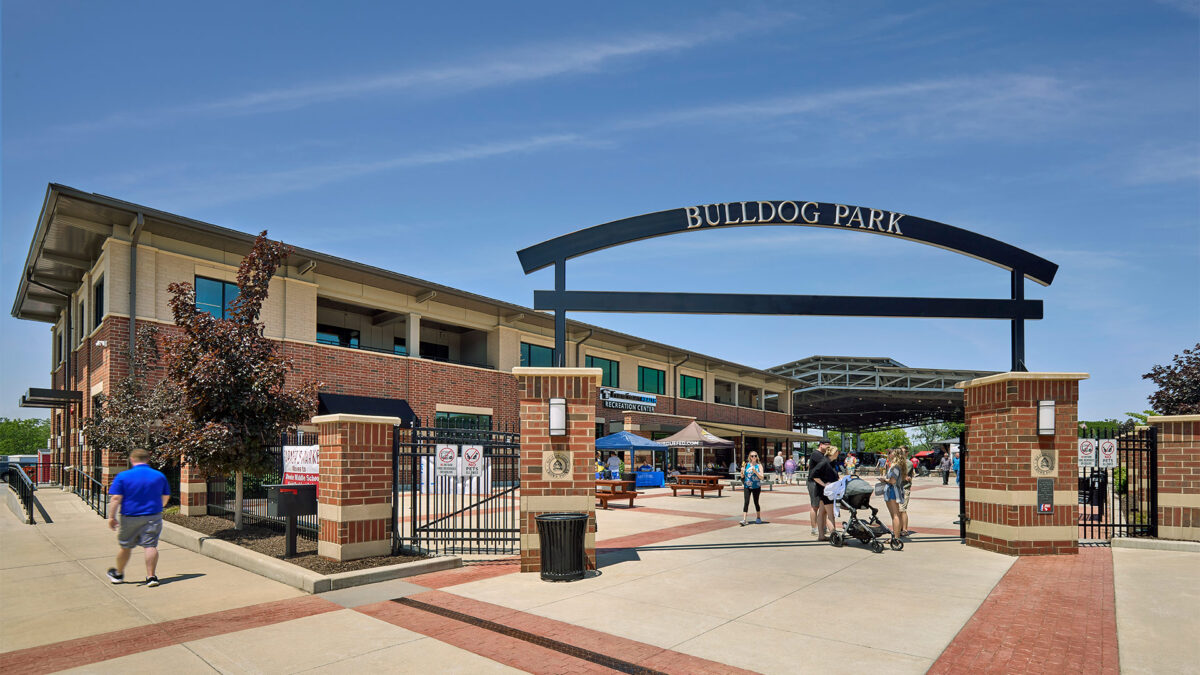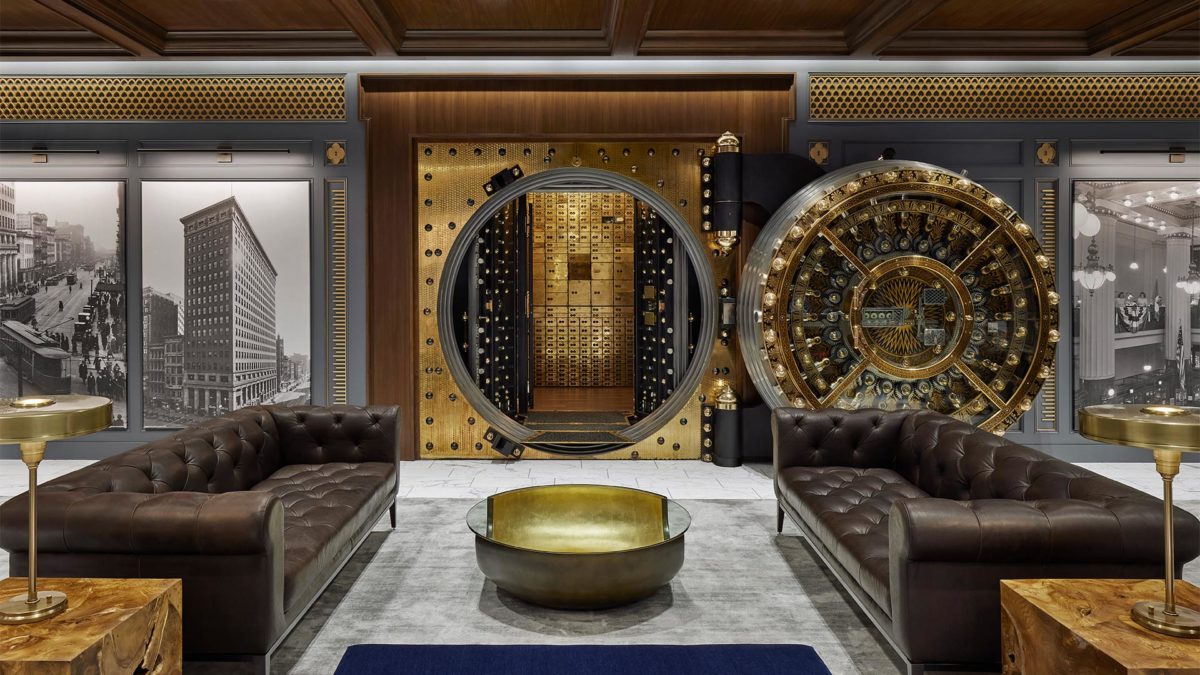
CSO’s Interior Design Studio partnered with Barnes & Thornburg, LLP to renovate an under-utilized asset at their national headquarters in downtown Indianapolis. Originally built in 1903 as a bank, their office at 11 S. Meridian Street still houses the original vault room in the lower level.
As is often the case, the client had ongoing relationships with other designers. However, they sought out CSO’s expertise when the other firms’ ideas for the space did not align with the client’s vision. CSO worked closely with the client to design the space, utilizing hand-drawn sketches and 3D renderings to align the client’s vision with designers’ interpretation.
The original space was comprised of multiple vaults, of varying sizes, within a larger secure area. Measuring at just 3,249 square feet, the space was going to need to maximize flexibility and style if it was going to satisfy the program. To accommodate the client’s goals for utilizing the space, the team also devised two furniture setups: lounge seating to support cocktail events or more casual gatherings, and a conference layout to support board meetings and other formal meetings. Each setup needed to look and function as if it was permanent so great care was taken to select pieces that looked substantial but could be easily moved.
Designers drew inspiration for detailing such as the scalloped frieze and oculus featured at the top of the walls from existing architecture in the client’s office and on the historic building. The primary, elaborate vault door was fully restored to become a focal point. When it was determined that one of the other vault doors needed to be removed it was deconstructed, with a portion of it becoming a feature inset into the floor. At either end of the newly created primary gathering space, bookcases are anchored with green safe deposit boxes which were intentionally preserved in their unrestored state, adding character to the design and embracing the vault’s storied journey.
As a subtle reference to height markers often seen in mugshots, the design team added a quirky tick mark detail set into the trim that frames each set of doors. Above each of the tick-mark details is a quatrefoil with a key-hole detail, personalizing the classic detailing to this unique project.
The result of the collaboration with the client is a uniquely branded space that is highly flexible. In a space that could easily have felt confined, designers achieved a warm elegance worthy of admiration by the client and visitors alike.
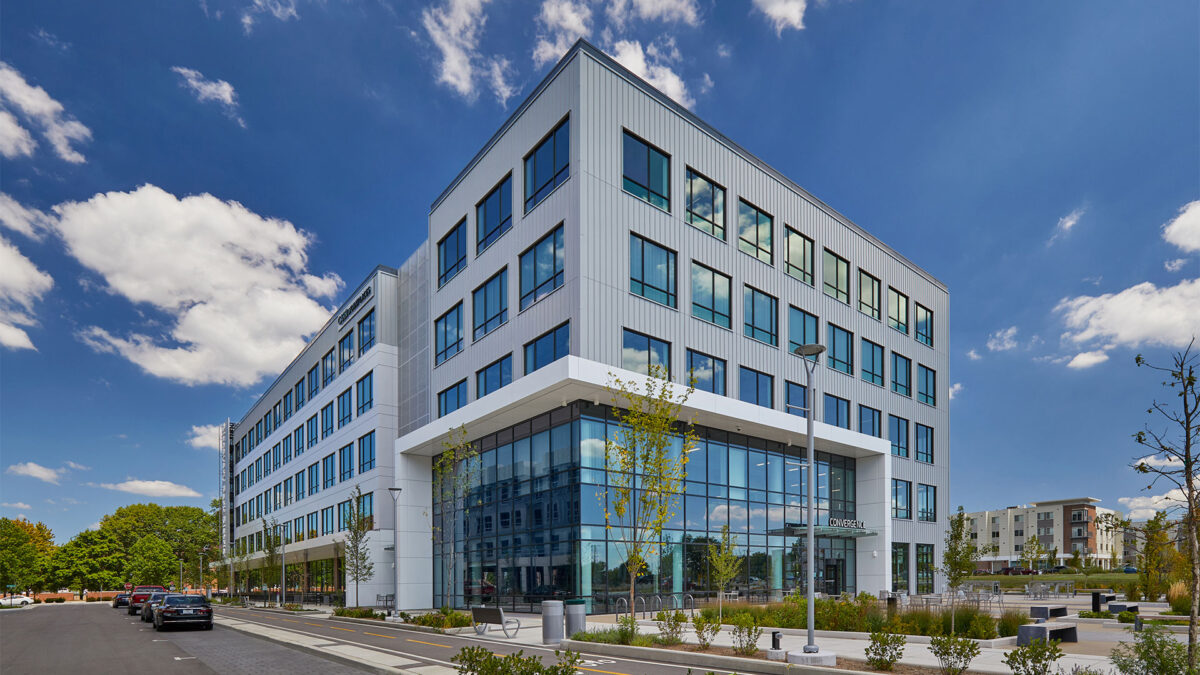
The building is a gateway to the Discovery Park District, an innovative, purpose-driven development on the western edge of Purdue University’s campus.
The Convergence Center provides a resource hub for innovation, technology, commercialization and entrepreneurial activities. It will enable Purdue faculty and students to interact with industry leaders for collaborative research, licensing, and startup creation.
Convergence will also serve as the home of Purdue Foundry, a program that helps Purdue students, faculty, and alumni start their own businesses along with other tech transfer and entrepreneurial activities such as the Purdue Office of Technology Commercialization and the Purdue Office of Corporate and Global Partnerships.
The building configuration includes Class-A office space, retail space, meeting and event space, co-working space, common spaces, and a large atrium.
CSO also provided design services for Carr Workplaces Convergence, which occupies space on the first and second floor of the Center. Carr Workplaces offers users over 20,000 s.f. of flexible drop-in workspace, virtual offices, business services, and event space all within walking distance to Purdue University.
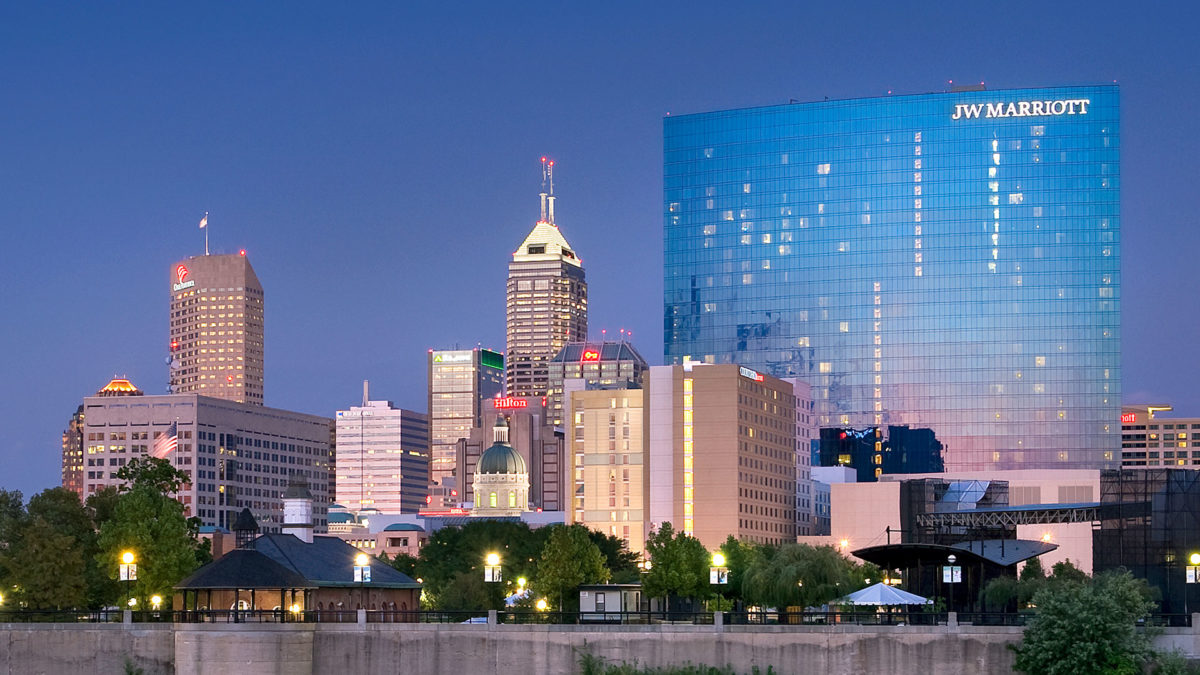
The 34-story crescent-shaped tower fronts the city but pivots on the site, reinforcing the downtown grid to the east while acknowledging the museum campus gardens and White River to the west and north. The complex has a low-rise masonry and limestone podium that wraps the west and south façades and creates a city-scaled plinth that helps moderate the overall scale of the structure. The dramatic tower interlocks with the podium and presents itself in full height along the east and north façades, and a two-story glass canopy defines the main entrance on West Street.
Within the podium there is ballroom and meeting space made up of 23,000 square feet of exhibition space, a 20,670 square foot junior ballroom and a 40,500 square foot grand ballroom, which is one of the largest Marriott ballrooms in the world. The 1,005-key complex also has a 1,000 car, three-level, below grade parking structure and a covered overhead walkway to the Indiana Convention Center, making it the perfect destination for the adjacent convention center, museums, ballpark, and business district. This project was completed in collaboration with HOK and was the largest JW in the world at the time of completion.
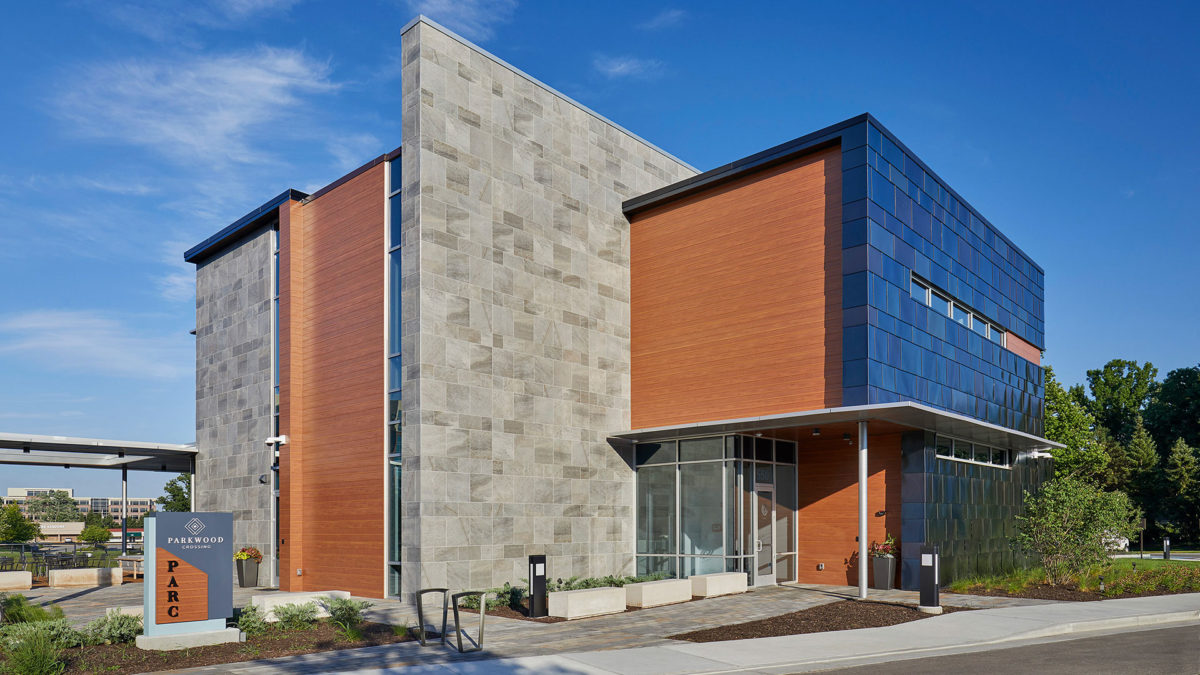
CSO was commissioned to design an amenity center to serve Parkwood Crossing in order to invigorate the workplace experience for tenants by offering enhanced opportunities for food service, meeting spaces, as well as indoor and outdoor fitness. The location and orientation of the building provides visitors with a peaceful and regenerative connection with the adjacent lake. PARC includes a concierge, dining facilities, a 6,000 square foot fitness center, cyber café, conference rooms, a bike share option, and collaborative spaces available to all tenants located in Parkwood Crossing.
The design concept was organized so that the “service” functions are oriented to the west side of the building, acting as a thermal and visual buffer from western sun/wind exposure and views of the large parking field. This allows the “people spaces” – the cyber café, meeting areas, and lounge spaces – to take advantage of water views and a tranquil, shaded outdoor deck. This organization is architecturally expressed through the use of a continuous stone wall plane that bisects the building into solid and void volumes. The exterior utilizes natural materials including glass, concrete, stone, wood, and colored stainless steel “shingles” which project an urban feeling.
The interior design is focused on natural light, flexibility, openness, and durability. The carpet, tile, and polished concrete co-exist nicely, providing a soothing accent to those seeking respite, nourishment, or the opportunity for exercise. The diverse seating options provide solutions for a wide variety of personal interactions while allowing for unique experiences and vantage points for visitors. The 14,000 square foot state-of-the-art amenity center goes a long way toward improving the daily workplace experience of the Parkwood Crossing business community.
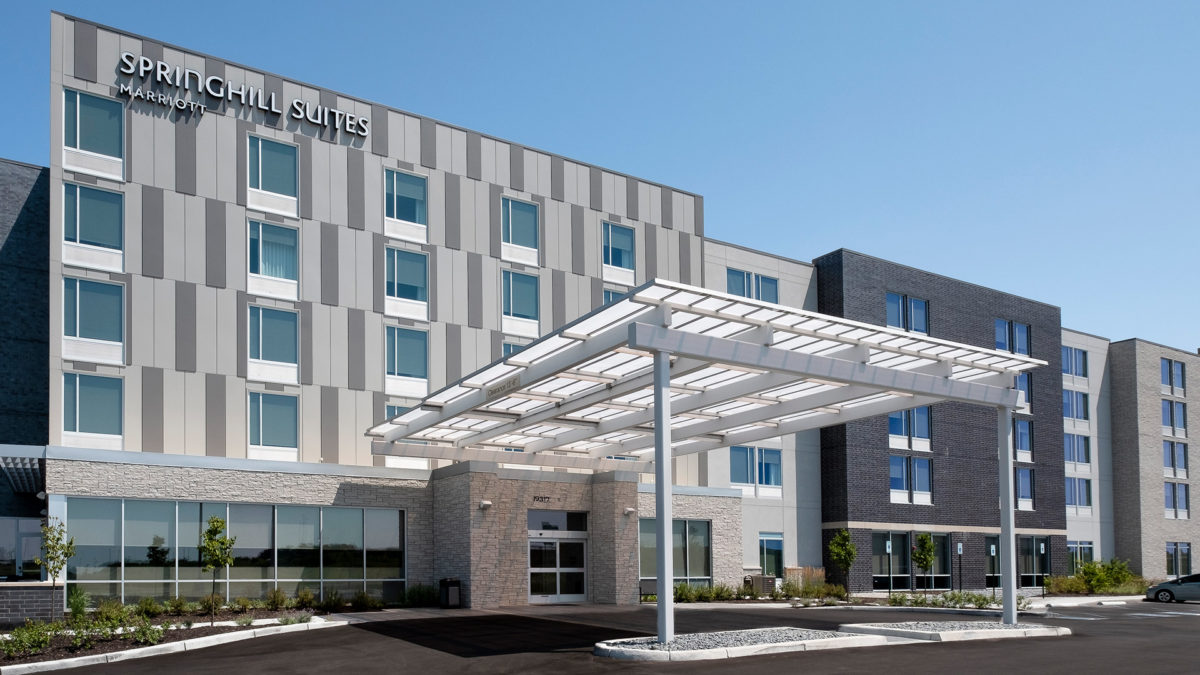
With events held year-round at the Sports Complex, lodging needs in the area have drastically increased. This 150-key, 5-floor hotel features public spaces, a custom exterior, 2,000 square feet of meeting space, prototypical breakfast, a full-service bar, and surface parking.
Suites at the new hotel are larger than typical hotel rooms to accommodate larger groups and families. Separate living, working, and sleeping spaces provide guests with flexibility and functionality.
The SpringHill Suites also offers 1,700 square feet of functional meeting space and the Oak Bar, located adjacent to the lobby, features a stylish space adorned with wood and other natural elements.
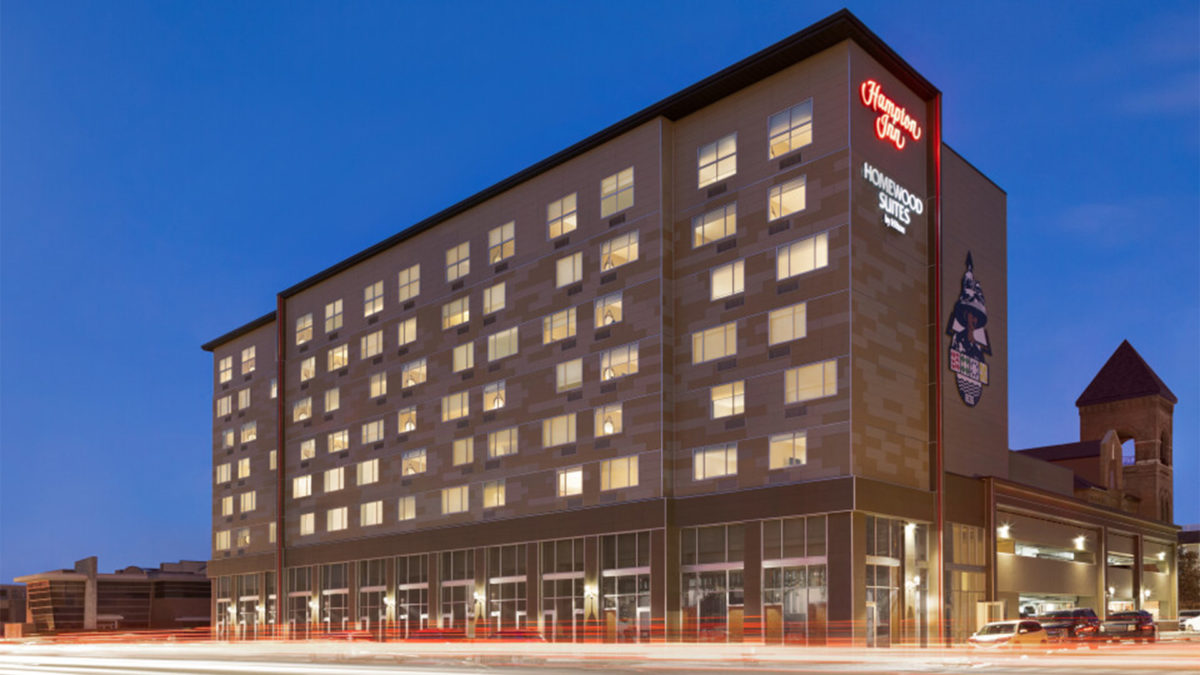
The church, built in 1869, was renovated and now serves as a lobby, dining area, and event space. The 7-story hotel includes a 123-key Hampton Inn and 108-key Homewood Suites by Hilton. Also included in the design is 11,500 square feet of meeting space, prototypical dining with a full-service bar restaurant, and a 3-level precast parking garage.
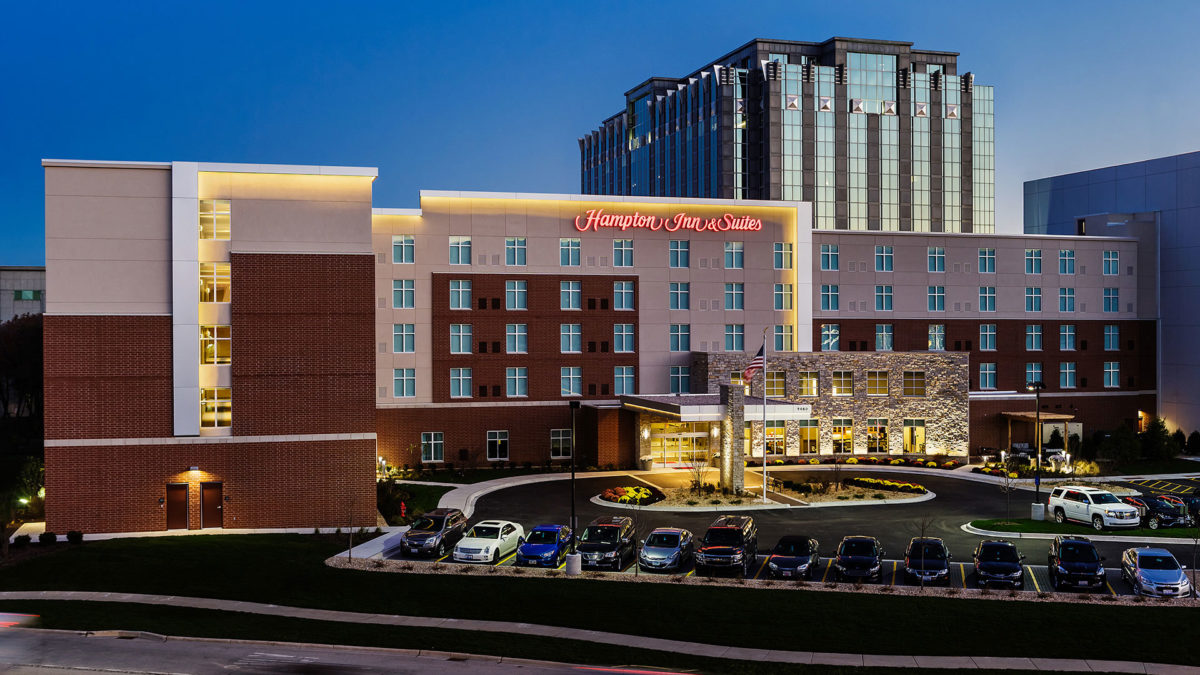
The 5-story, 158 key hotel is a shared site with a parking garage and office building. Upon arrival guests walk into an intimate atmosphere created by the use of harmonious cool colors, soft contrasting patterns, and delicate lighting. The lobby is designed as an extension of the common area which includes a breakfast and bar area that incorporates a variety of seating and lighting options for both leisure and business travelers. Additionally, a floor-to-ceiling fireplace wall provides a subtle divide between the lobby and common seating area as well as encourages a free flow of movement. Interior spaces are infused with local photography and artwork and the sleek modern aesthetic creates a feeling of elegance. Natural materials include brick, limestone, wood, and glass.
Hotel features include support spaces, a business center, a full-service bar, heated indoor swimming pool and fitness center, a food and beverage shop, and two 273 square foot meeting spaces that can accommodate up to 20 people.
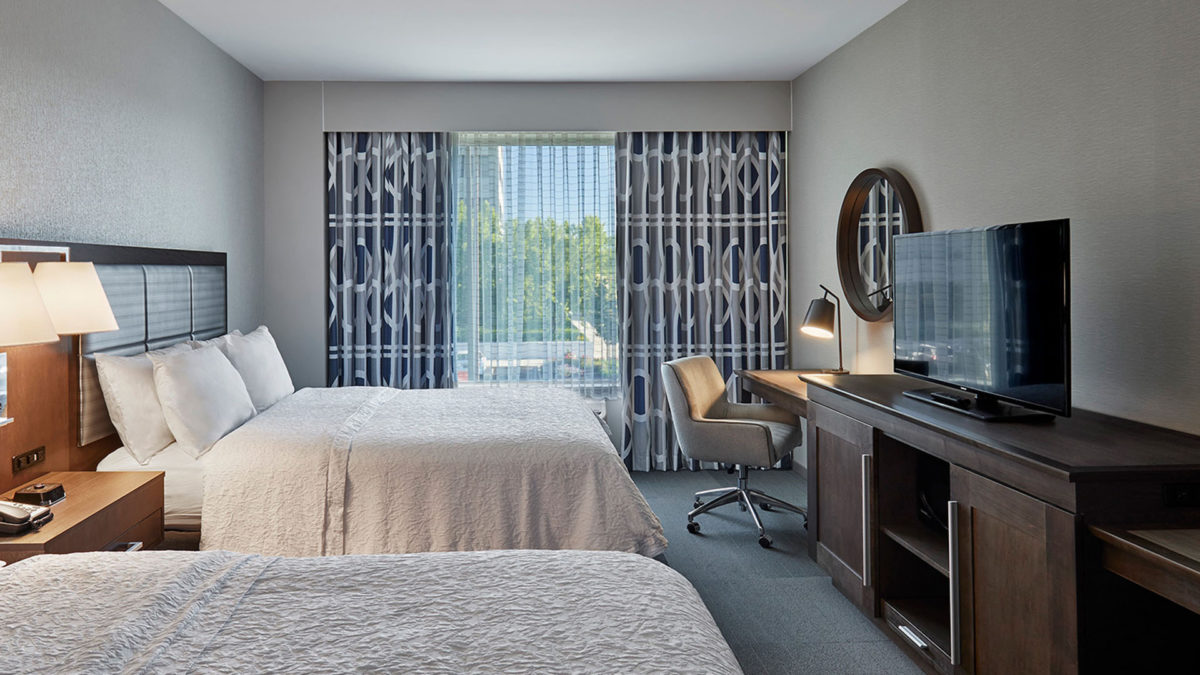
The Hampton Inn and Suites is a five-story, 129-room hotel featuring rooms with balconies, a large fitness center, indoor pool, and 1,150 square feet of meeting space. The project also included hotel support space, pool and fitness support spaces, and central laundry space. The hotel is part of the River North at Keystone mixed-use development that includes an office building, retail space, and luxury apartments.
The lobby of the hotel includes a two-story double-sided fireplace dividing the reception area and the dining area. The traditional interior finish of the lobby and lounge includes extensive use of wood finishes and detailing.
The guestrooms are a mix of prototypical and custom designs. Featured guestrooms and top floor guestrooms have balconies that provide views over Keystone Crossing and an adjacent lake. Ceiling heights throughout have been increased to create a more spacious feel to both guestrooms and corridors.
The public amenities include a board room, meeting room, oversized fitness center, and a lap pool with splash area. An outdoor patio area has ample seating and a large fire pit is easily accessible from the dining area.
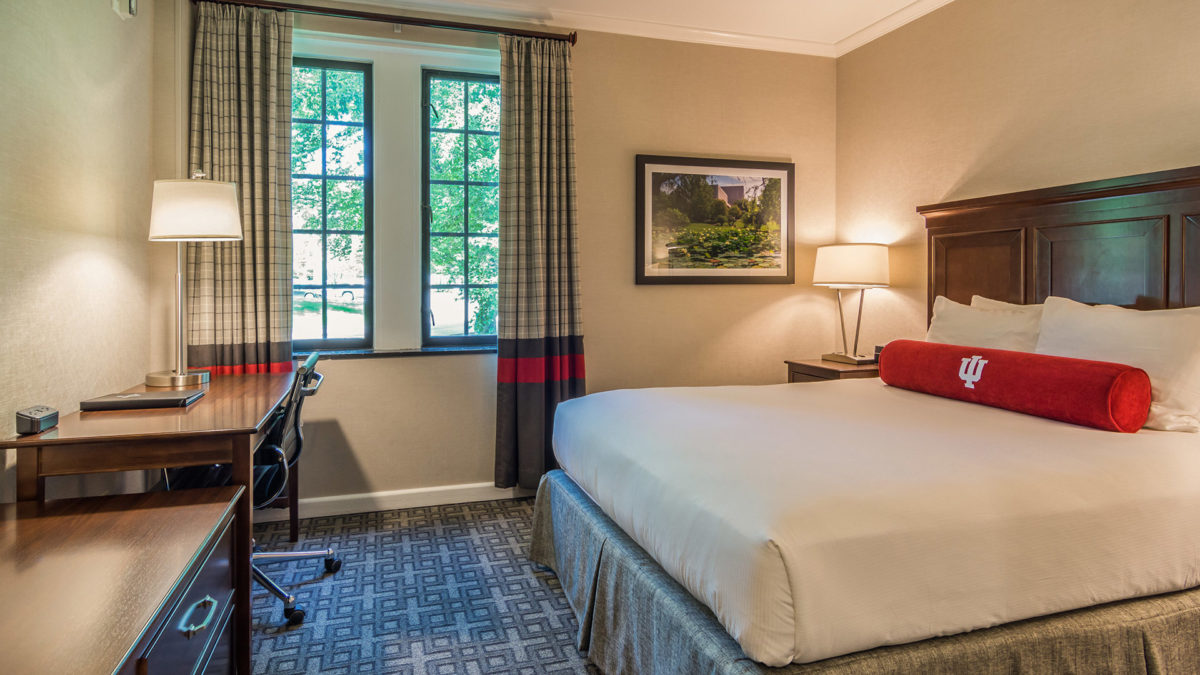
Located just steps from the iconic Sample Gates, the Biddle Hotel provides visitors and distinguished guests of the University with an opportunity to experience Hoosier hospitality at its finest.
The renovations at Biddle focused on enhancing the simple elegance of the boutique hotel as well as bringing the telecommunications infrastructure up to current standards. Upgrades included new finishes in the hotel’s guest rooms, suites, and corridors as well as the reconfiguration of bathrooms to improve accessibility. Additionally, the 1,320 square foot Federal Room was refreshed with new carpeting. The Metz Suite, which occupies the entire sixth floor of Indiana Memorial Union and is used for accommodating distinguished guests and visitors, also received renovations to its window treatment, cabinets, and woodwork. CSO provided architecture and interior design services to update the hotel.








